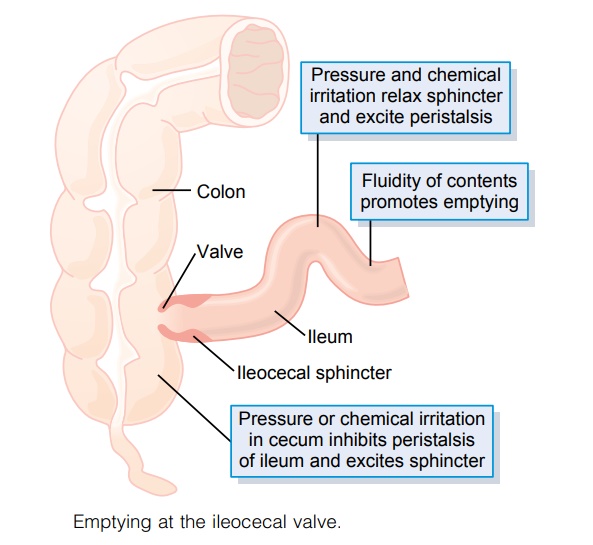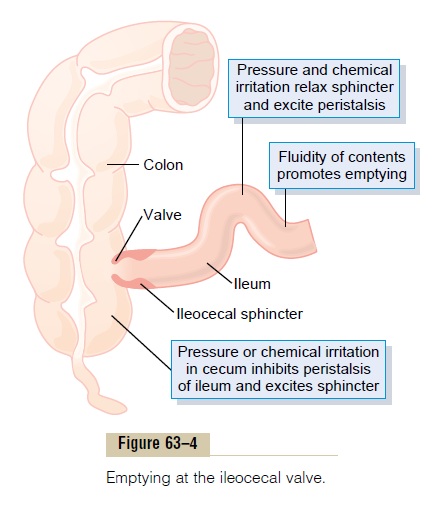Chapter: Medical Physiology: Propulsion and Mixing of Food in the Alimentary Tract
Function of the Ileocecal Valve

Function of the Ileocecal Valve
A principal function of the ileocecal valve is to prevent backflow of fecal contents from the colon into the small intestine. As shown in Figure 63–4, the ileocecal valve itself protrudes into the lumen of the cecum and therefore is forcefully closed when excess pressure builds up in the cecum and tries to push cecal contents backward against the valve lips. The valve usually can resist reverse pressure of at least 50 to 60 centimeters of water.

In addition, the wall of the ileum for several cen-timeters immediately upstream from the ileocecal valve has a thickened circular muscle called the ileo-cecal sphincter. This sphincter normally remains mildlyconstricted and slows emptying of ileal contents into the cecum. However, immediately after a meal, a gas-troileal reflex (described earlier) intensifies peristalsis in the ileum, and emptying of ileal contents into the cecum proceeds.
Resistance to emptying at the ileocecal valve pro-longs the stay of chyme in the ileum and thereby facilitates absorption. Normally, only 1500 to 2000 mil-liliters of chyme empty into the cecum each day.
Feedback Control of the Ileocecal Sphincter. The degree ofcontraction of the ileocecal sphincter and the intensity of peristalsis in the terminal ileum are controlled sig-nificantly by reflexes from the cecum. When the cecum is distended, contraction of the ileocecal sphincter becomes intensified and ileal peristalsis is inhibited, both of which greatly delay emptying of additional chyme into the cecum from the ileum. Also, any irri-tant in the cecum delays emptying. For instance, when a person has an inflamed appendix, the irritation of this vestigial remnant of the cecum can cause such intense spasm of the ileocecal sphincter and partial paralysis of the ileum that these effects together block emptying of the ileum into the cecum. The reflexes from the cecum to the ileocecal sphincter and ileum are mediated both by way of the myenteric plexus in the gut wall itself and of the extrinsic autonomic nerves, especially by way of the prevertebral sympa-thetic ganglia.
Related Topics